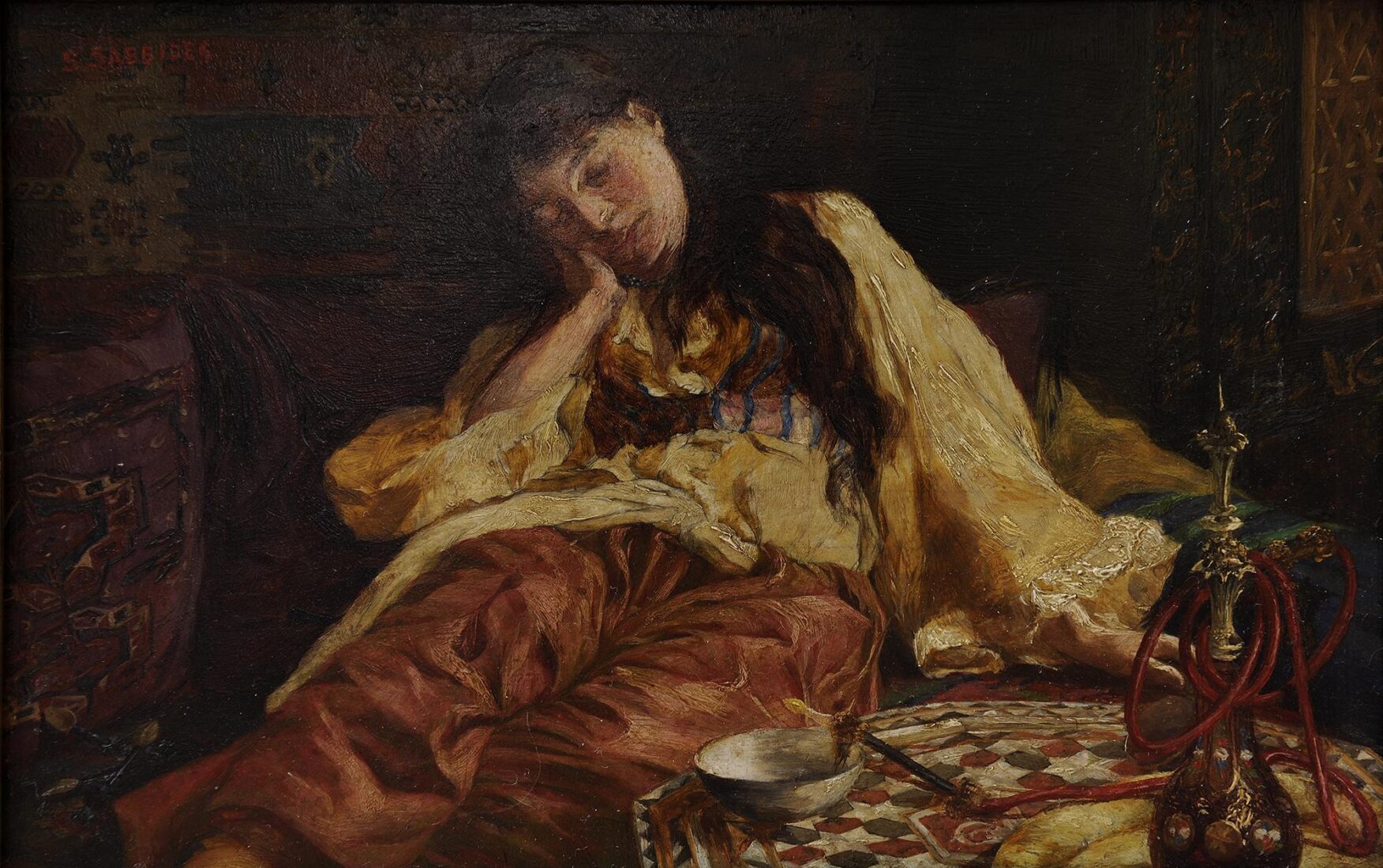

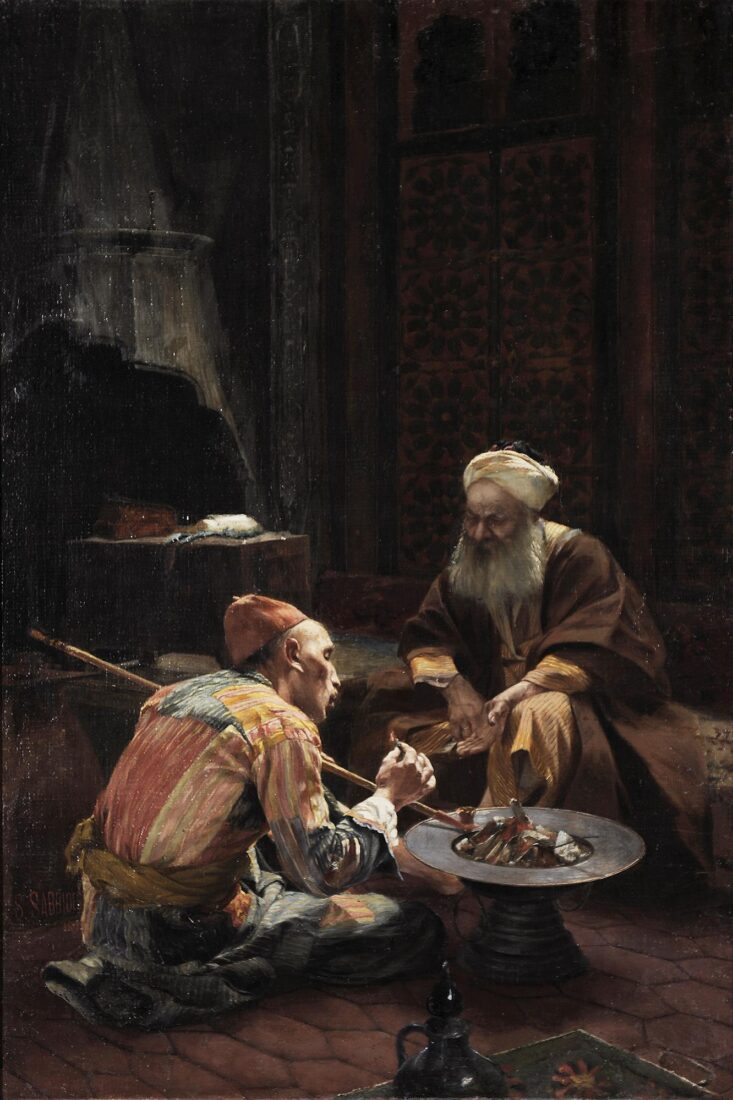
Born in Asia Minor, Symeon Savidis was an authentic Orientalist. This painting records the ritual of lighting the pipe. The scene is set in a characteristic interior in a luxurious palace. The old man with the turban and lush caftan is patiently waiting for the pipe to be lit by his slave with the exotic, Mongolian features and the colourful, patched clothes. His face is illuminated by the flames from the fireplace and the reflection of the coal blown by the servant. This has been one of the favourite subjects for painters since antiquity. Dark brown and red tones prevail in this scene, which invokes silence and recollection.
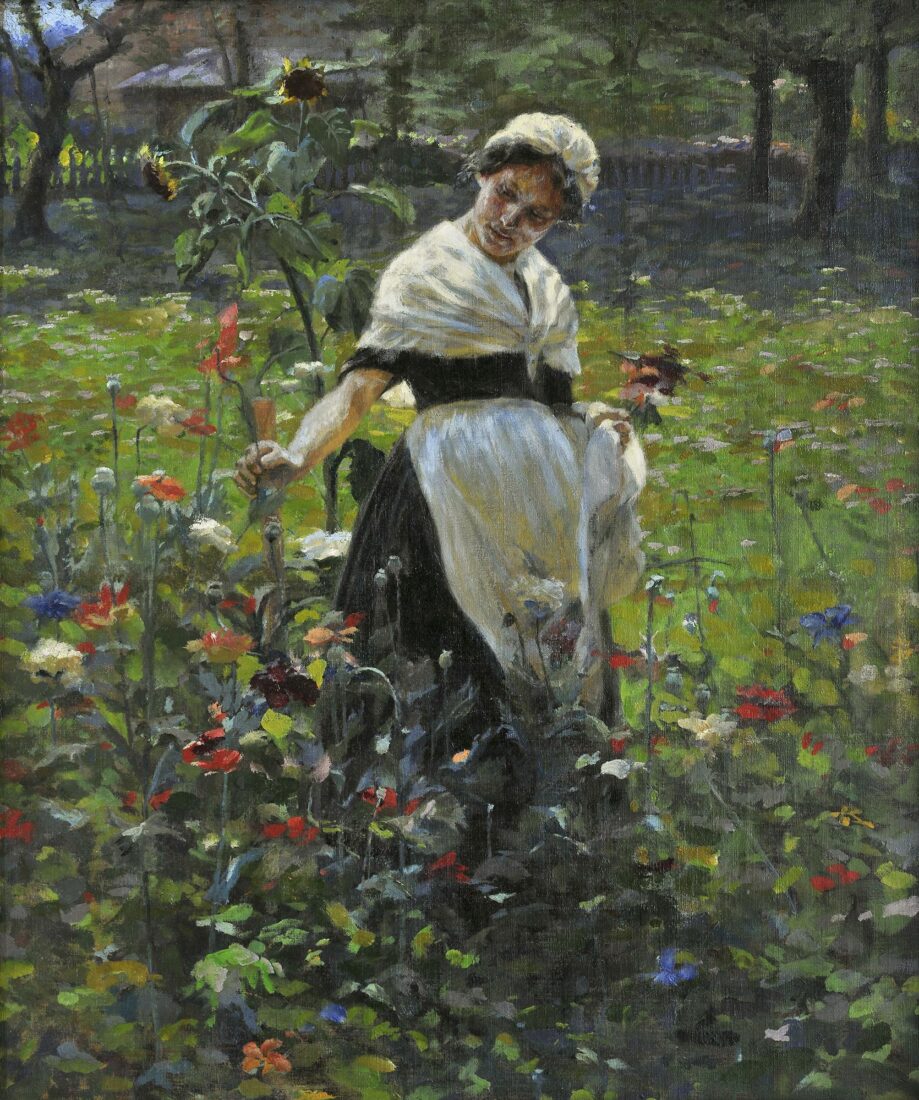
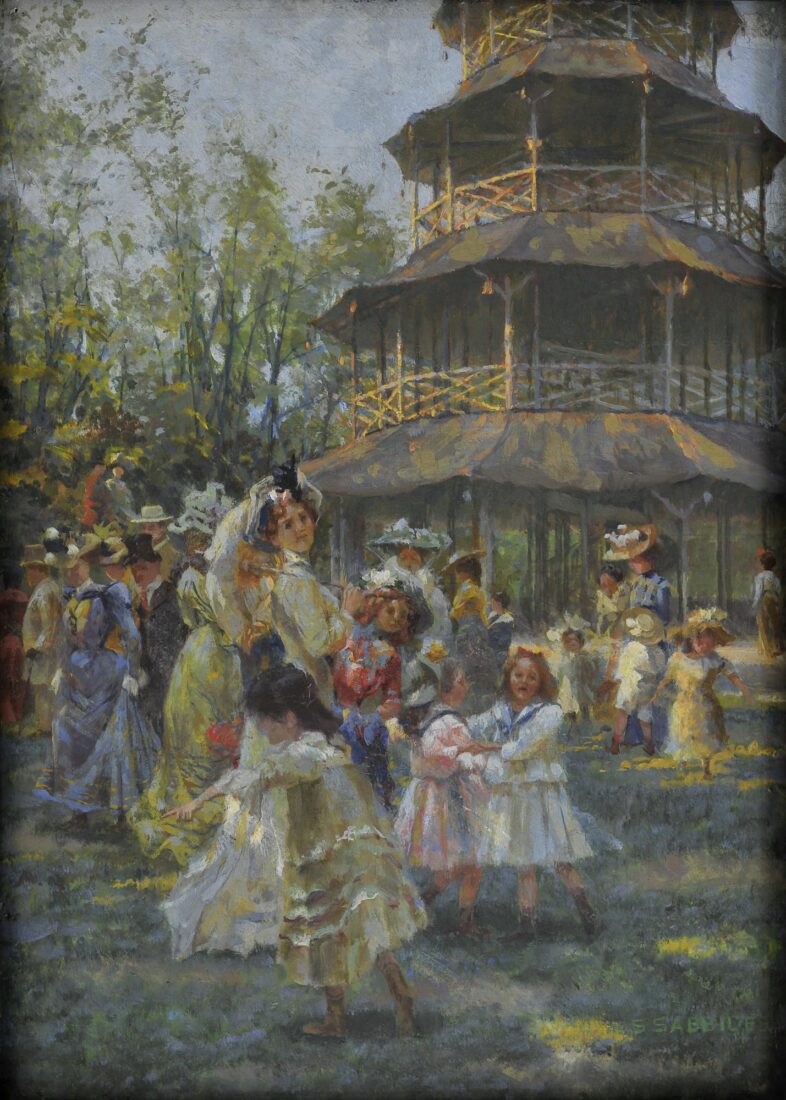
Symeon Savvides is the most authentic Impressionist of the Munich School and perhaps the only one who fully assimilated the theory of light and colour of this School. This was because he conducted his own research and studied the physiology of light, its analysis into the spectrum colours, and the interdependence of light and colour in nature, following atmospheric changes. In front of the Chinese tower in the Munich Park, a joyful bunch of kids in white are going crazy, whirling around a beautiful girl with an umbrella. In the background, a colourful crowd bustles. The painter intended to offer an instant capture, a snapshot of a Sunday walk in the Munich Gardens. We can almost feel the light falling on the white and coloured clothes and animating them. “Ponds” of light form on the grass. The white colour is rendered through light complementary shades of blue and ochre, while only where the sun falls is the white truly pure. The artist wrote, “What if a sun ray suddenly fell on the white dress in the shade? Then that would become the lightest spot throughout the entire event in the work.”
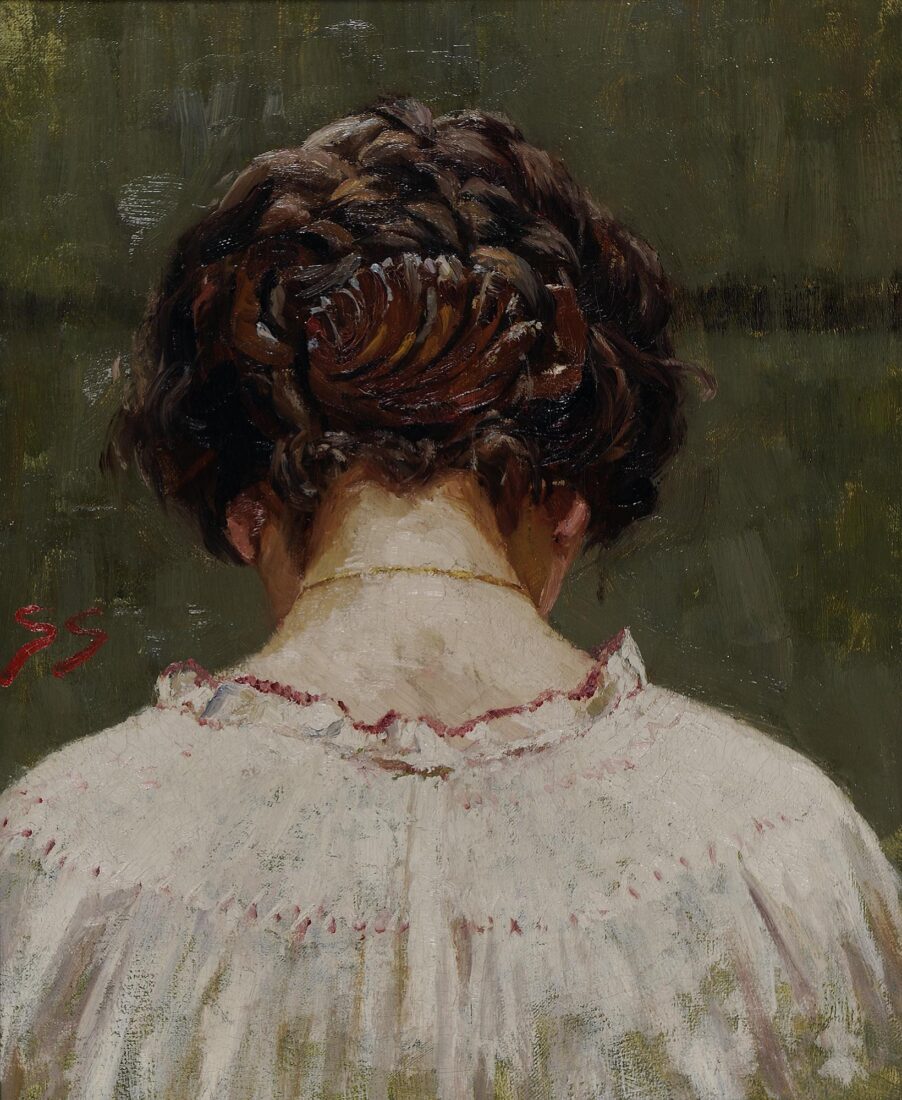
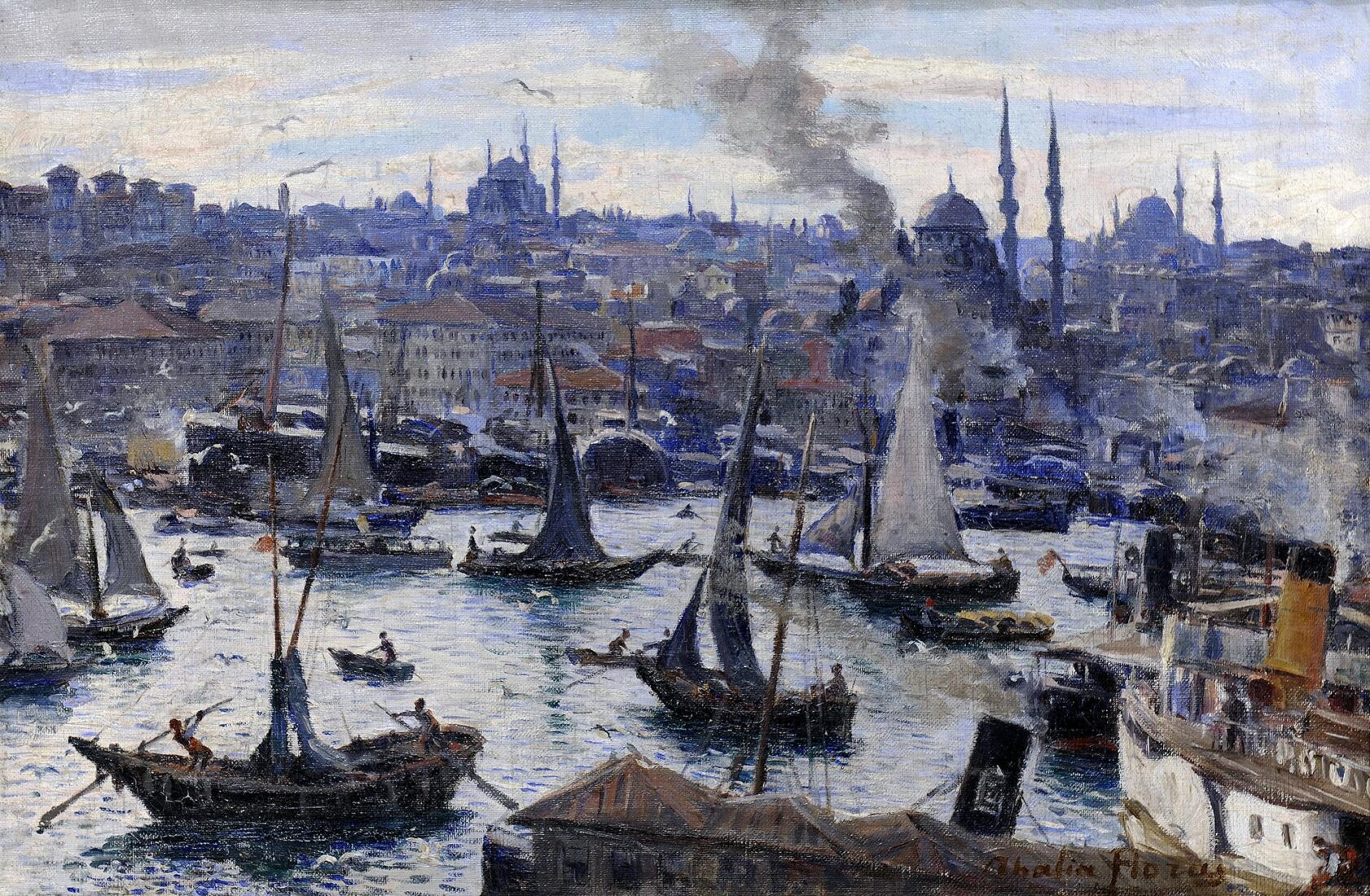
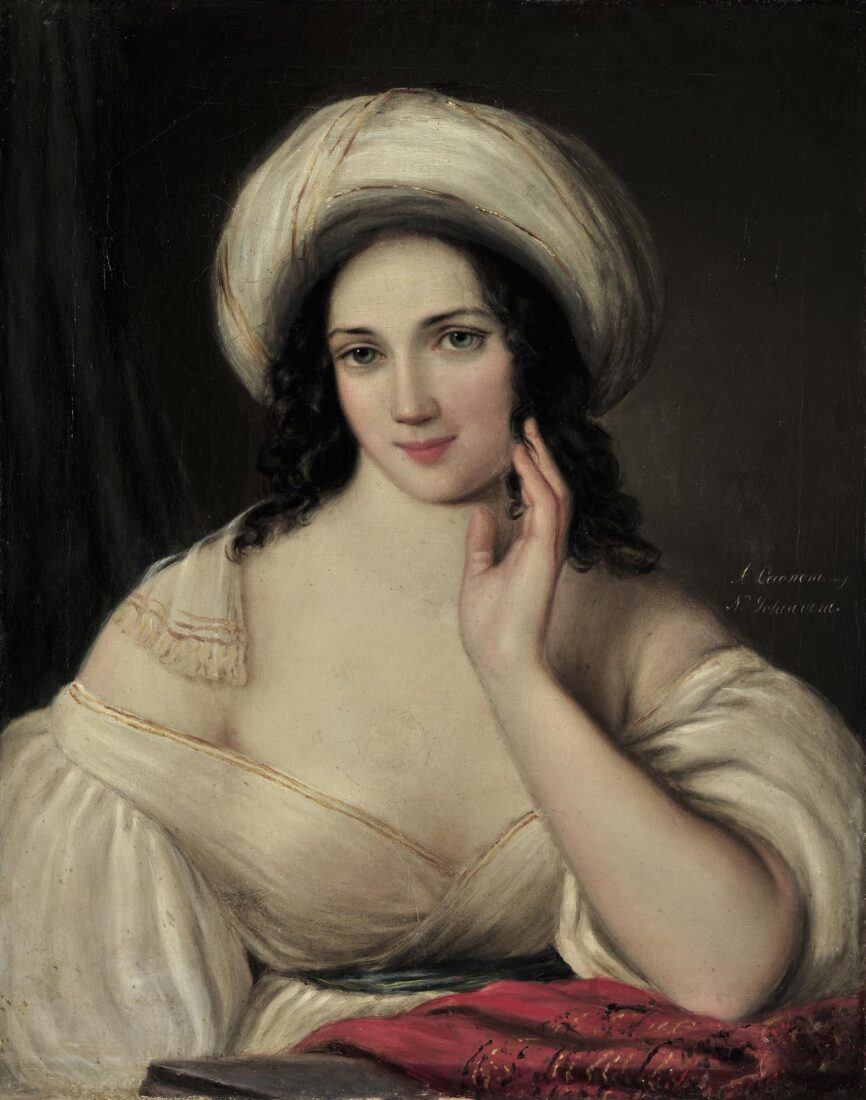
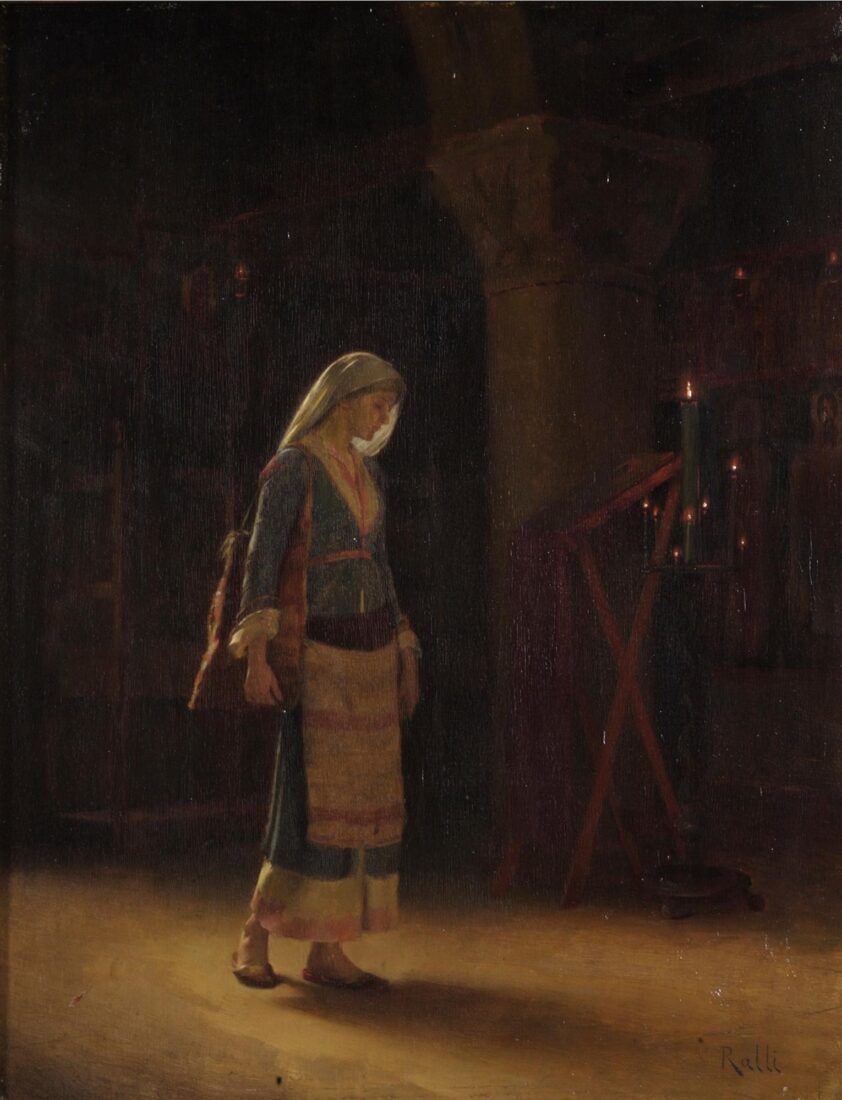
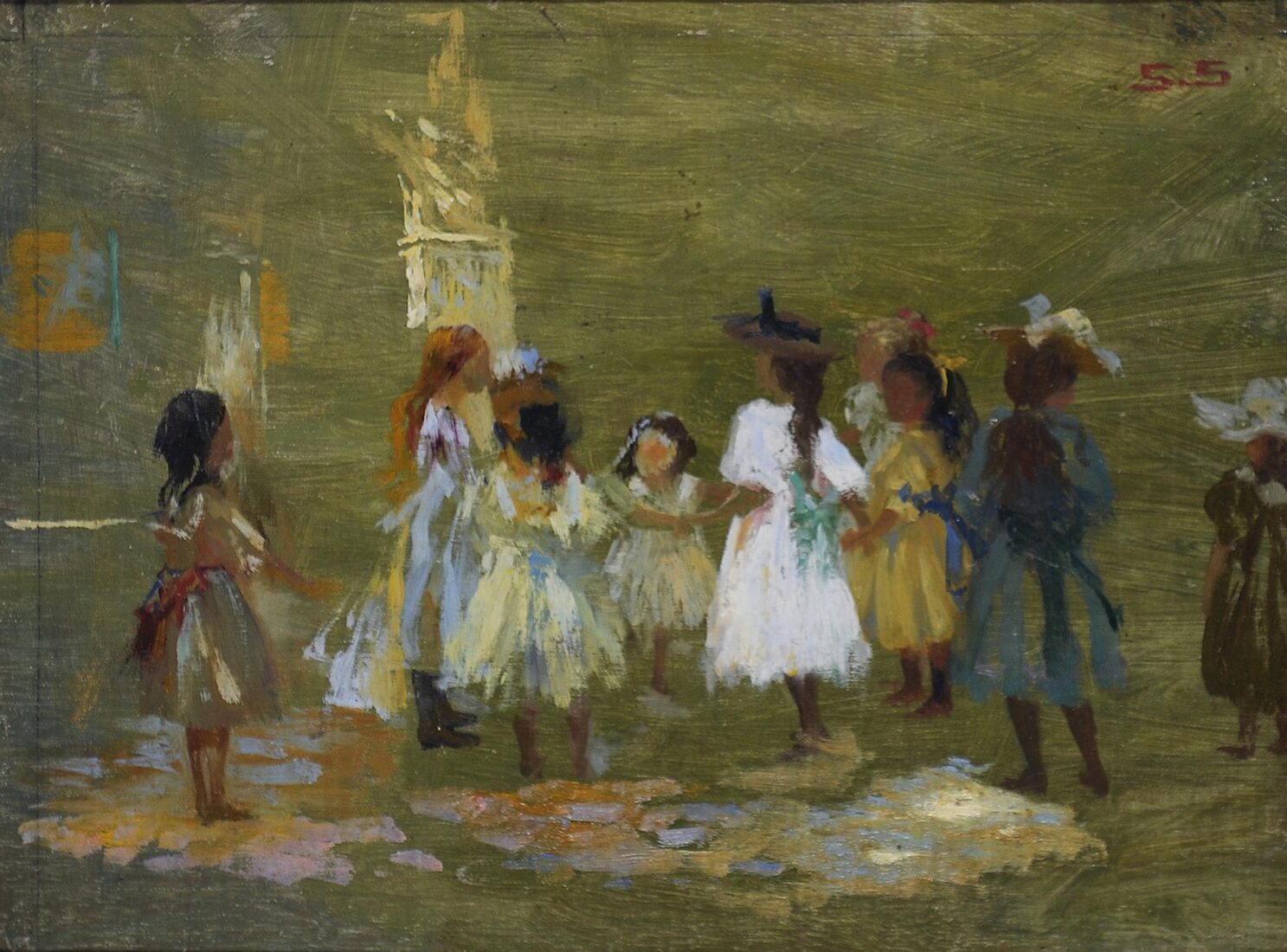
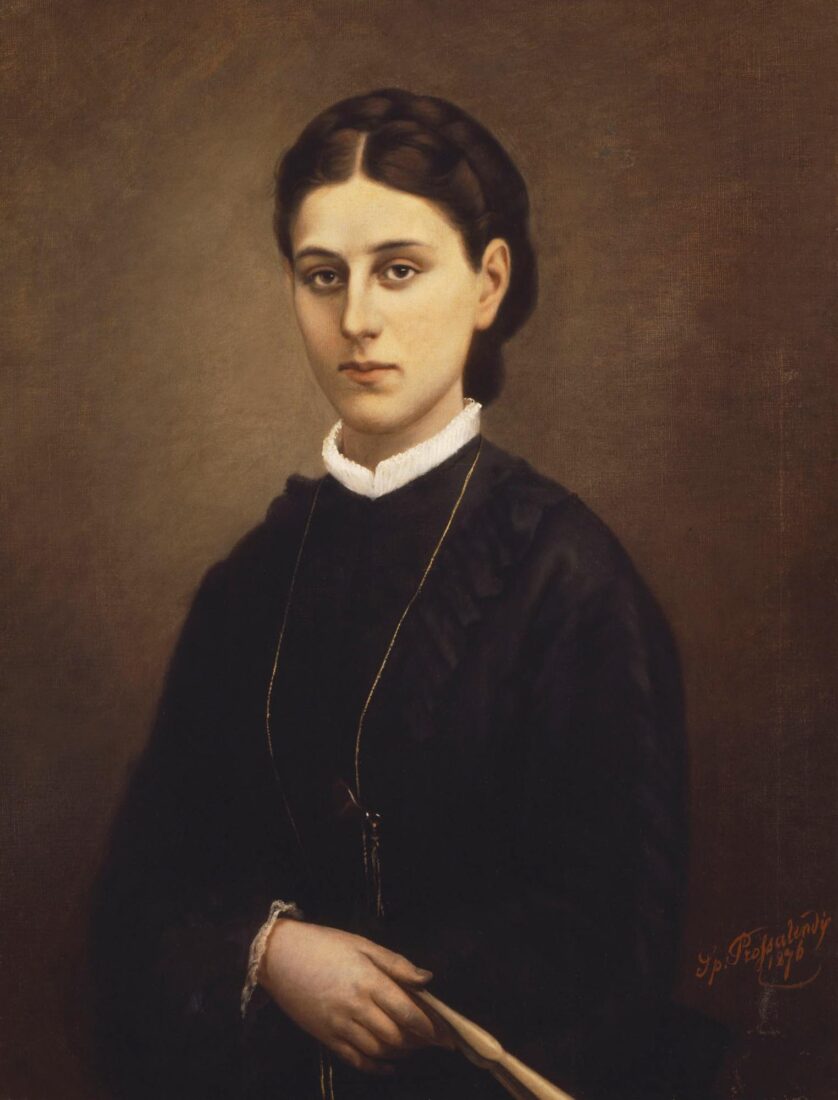
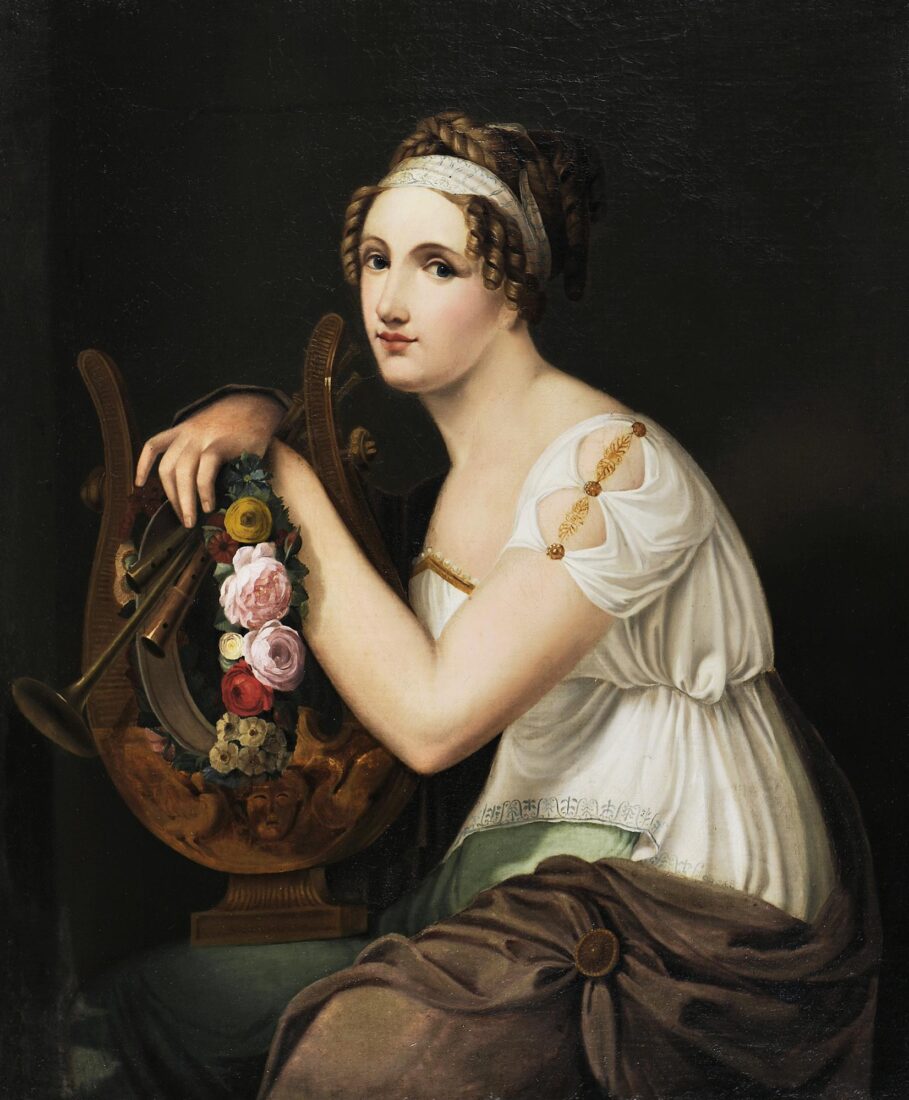
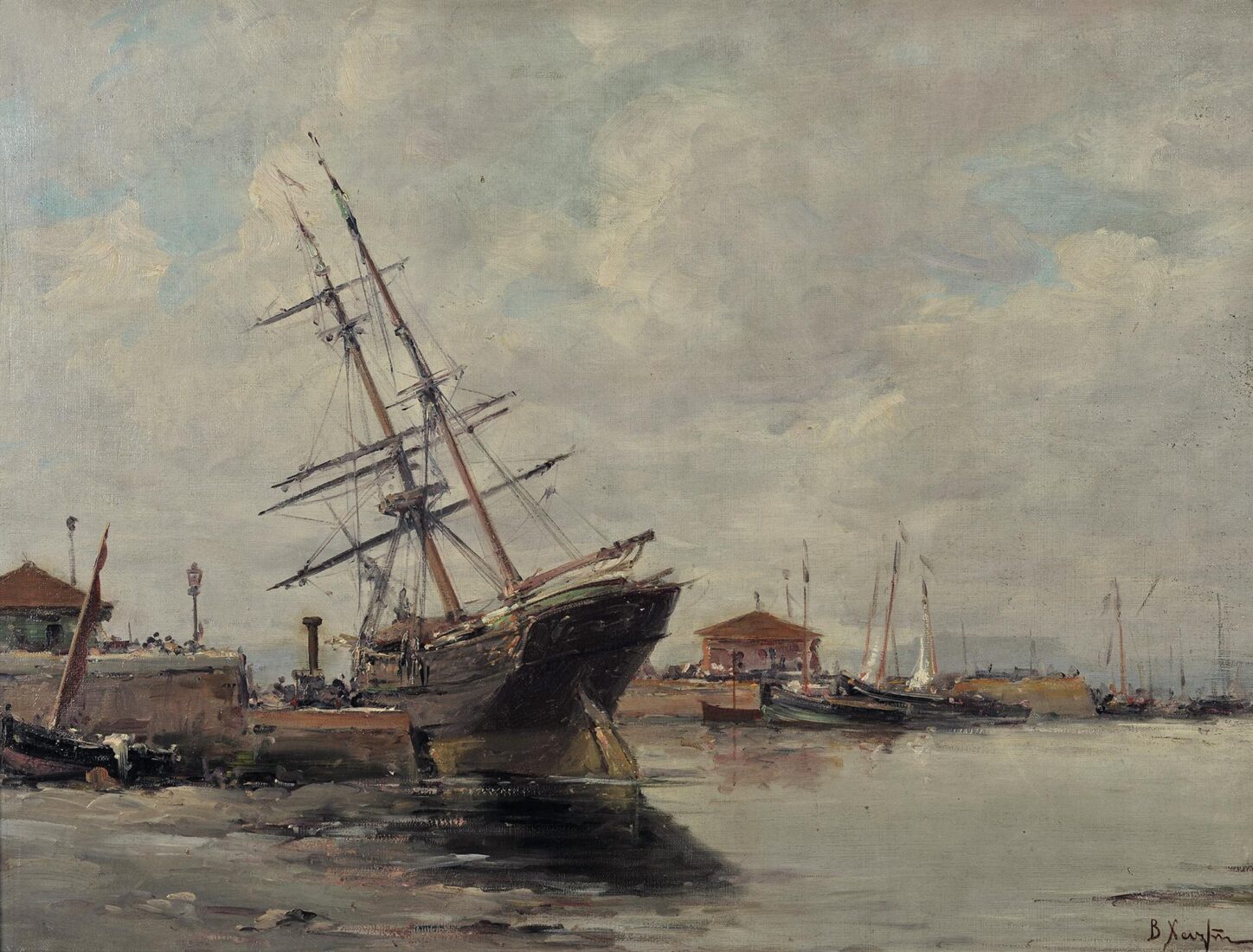
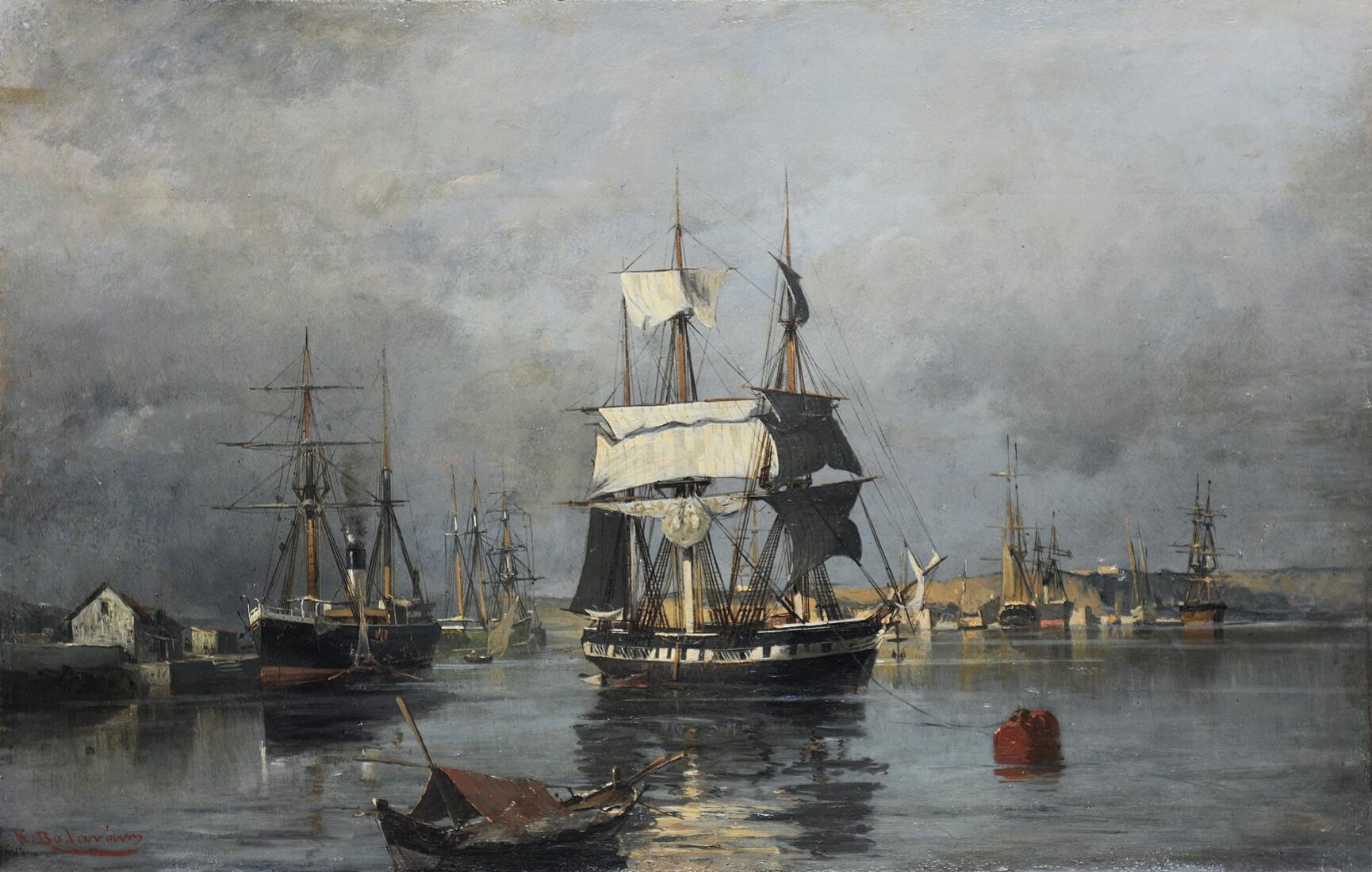
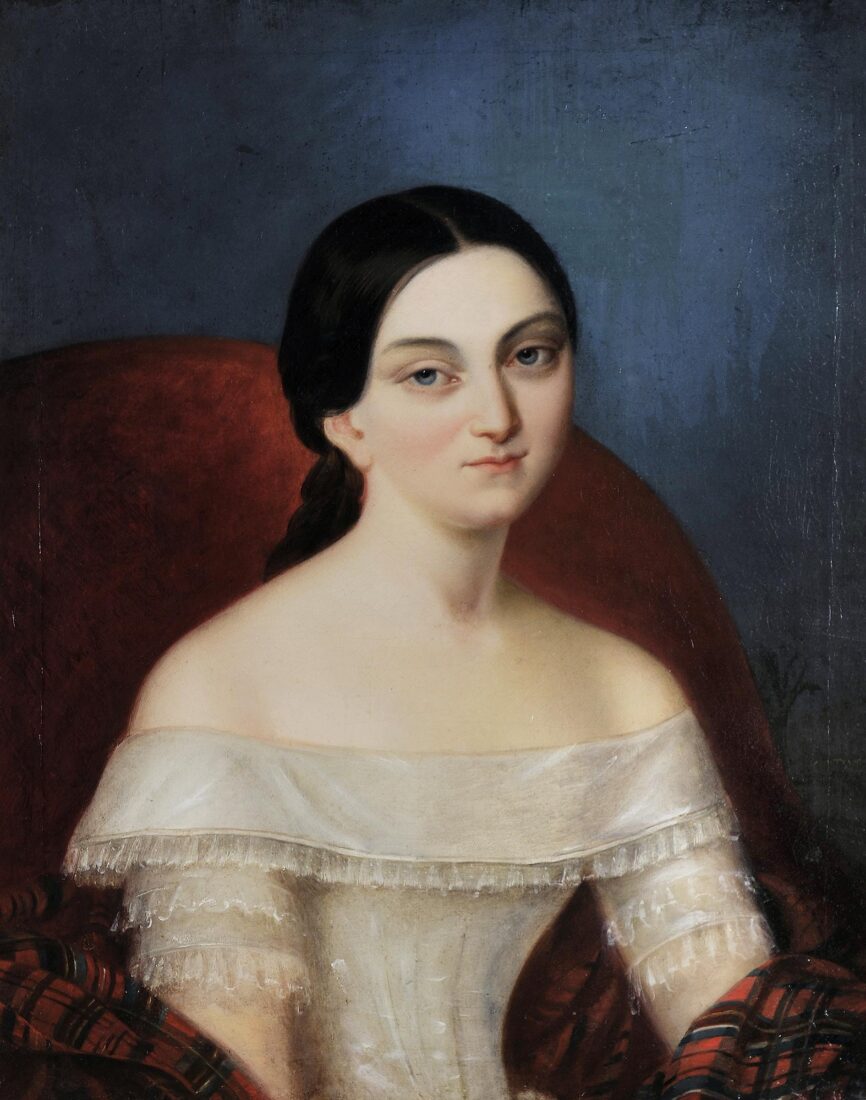
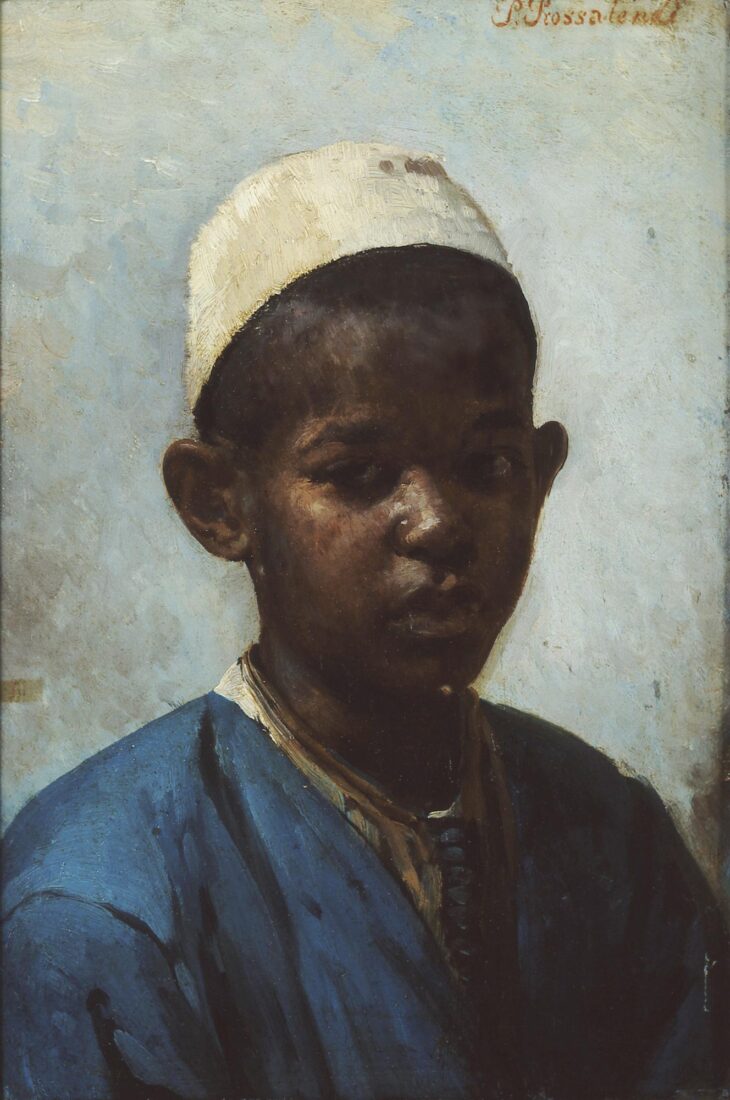
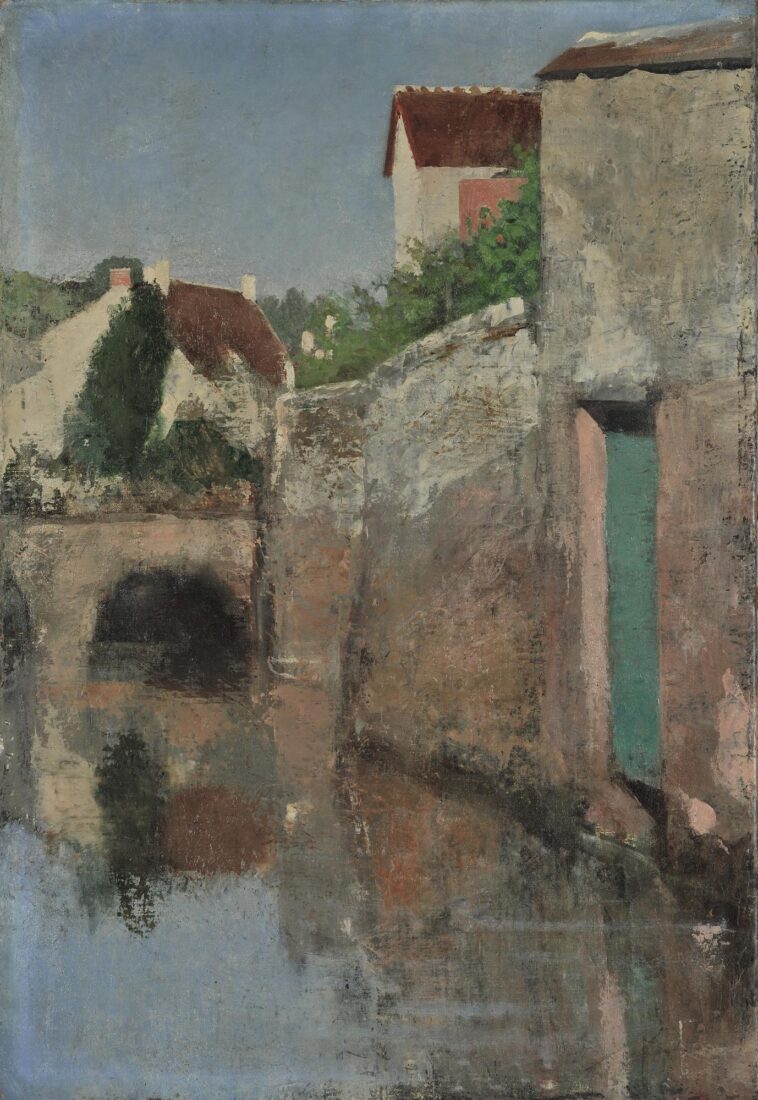
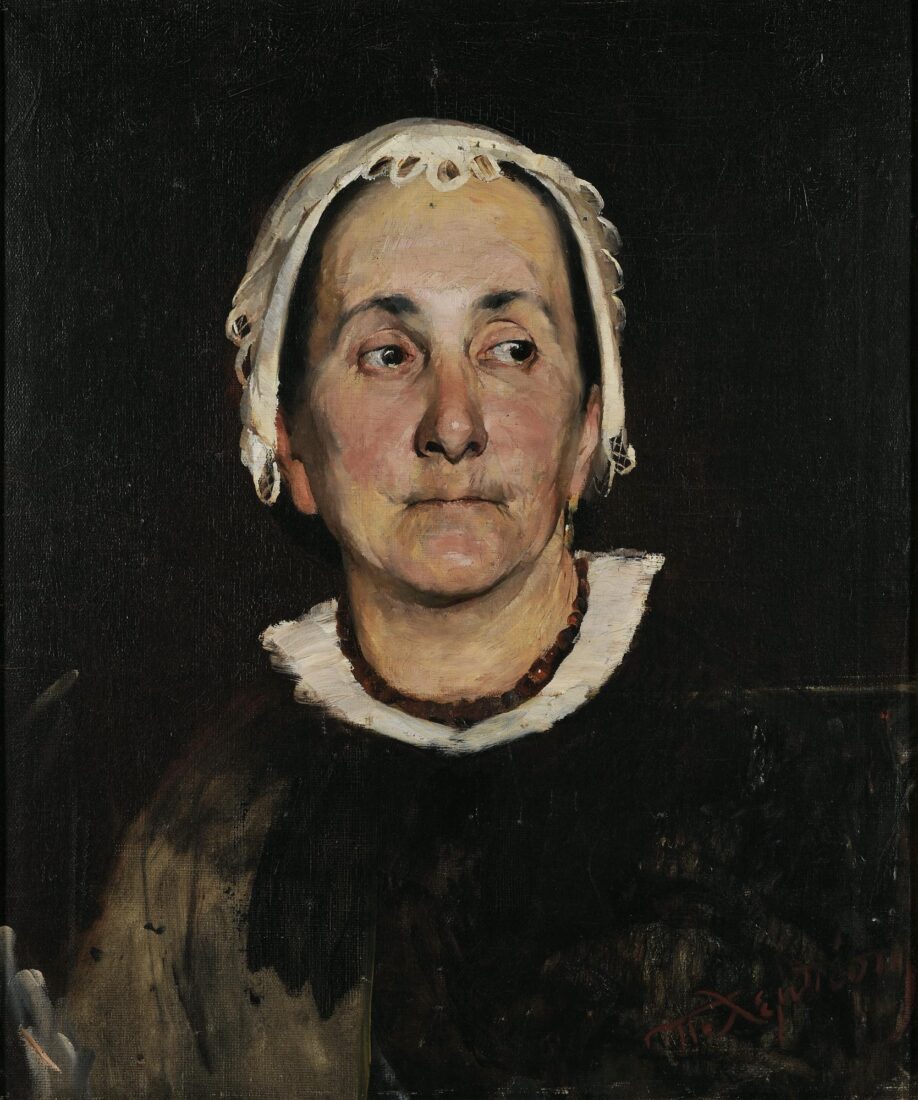
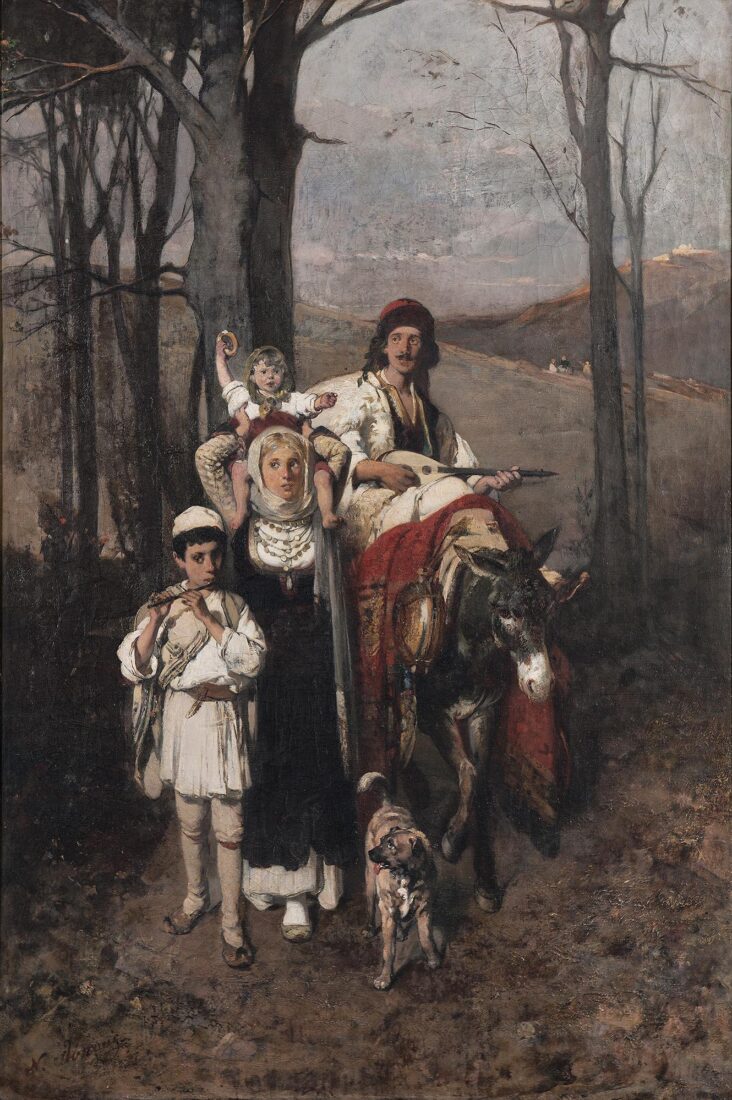
Nikephoros Lytras is considered as the founder of the Munich School. Appointed as Professor at the School of Arts in 1866, upon his return from Munich, he helped shape generations of Greek artists.
Here is one of Nikephoros Lytras’ characteristic genre paintings. A family – the father, the mother and their two children – are on their way back from a holiday on Mount Penteli. It is wintertime, as the trees are bare. Everyone is in their special holiday costume. The father is playing the lute, riding the donkey, which is decorated with colourful blankets. A wine flask hangs from the saddle. The mother follows on foot with her youngest child on her shoulders, a cookie from the feast in its hand. The eldest son walks by the mother, accompanying the lute with his flute. A gleeful dog is in front of them. The merry procession is climbing down the hill towards the viewer. It feels as if they were about to come out of the painting and enter our own living space. Their mood is contagious, and the vibrant colours, white, red, black and gold are in harmony with the joyous atmosphere of the scene. Nikiforos Lytras has masterfully and meticulously rendered it, capturing the character and mood of each figure.
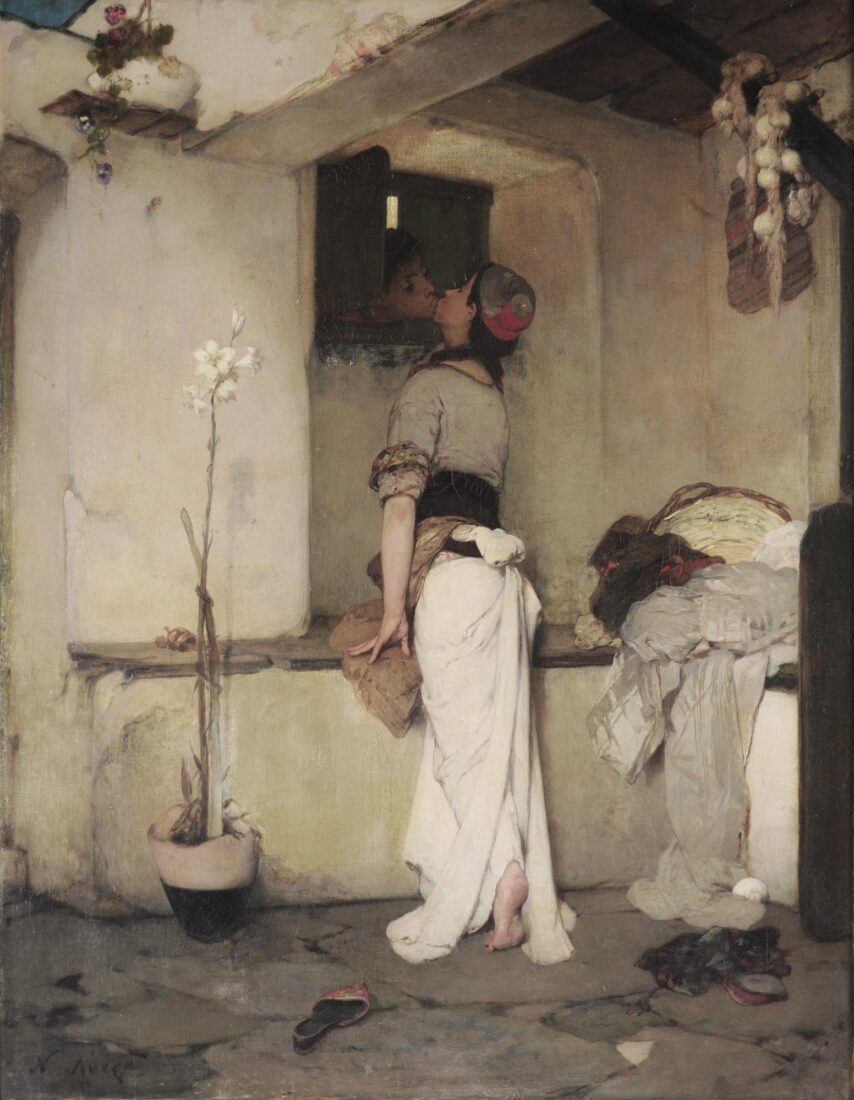
In “The Kiss”, the scene is set in a courtyard, in which a slender girl is rising on the tips of her tows in order to kiss her beloved, whose head can be seen through the window high up. The lily in the pot symbolises purity, while its slender stem echoes the slender girl’s motion. Ochre and white prevail, along with some red on the girl’s fez. The latter colour was a favourite of Nikephoros Lytras’. The abandoned slipper suggests the girl’s rush to meet her beloved, while at the same time marking space, that is, making us part of the scene.

